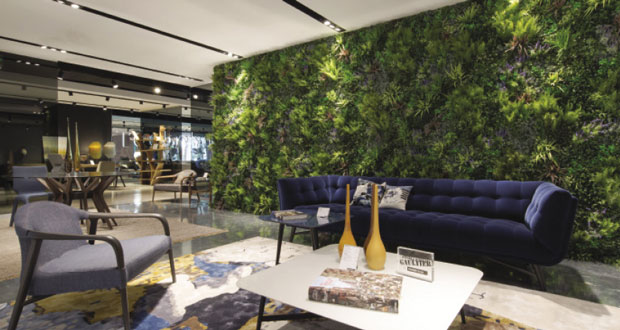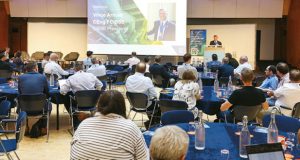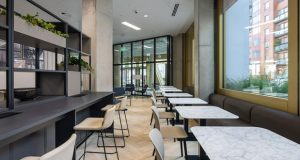Paul Alder, Founder and Managing Director, Vistafolia on green ways of reducing toxicity in the working environment
As offices are reoccupied after a year of disruption and change, the role and importance of workplace wellbeing is likely to be the top priority. Research continues to thrive in this area with findings that suggest there is a strong connection between employee health, wellness and engagement with productivity and overall business performance.
One major focus for many businesses has been interior office design, which is constantly being reimagined to both creatively and functionally support goals for greater productivity and wellbeing. This means understanding how design can inspire, uplift, or even motivate staff, rather than allowing empty or underutilised space to go to waste. Design is often experienced as more than a backdrop by employees, but as a creative space that impacts their output.
But how can facility and office managers nurture a culture that focusses on workplace wellbeing through greener design? Better yet, what can we learn from sustainable design that can help uplift and
inspire employees?
GREEN OFFICES
The term ‘green building’ has grown in importance within key circles of influence, whether that’s interest from the public, politically, or even as hard deadlines and goals set by policymakers. There is a new demand for sustainable design, which is an area that has outgrown purely social roots. Many leading businesses are now trying to minimise their carbon footprints, by applying sustainable design into their office settings, for example with more natural décor.
Greener office designs have the power to achieve different outcomes, whether that’s the use of office plants to foster calmness and tranquillity, or to help with worker inspiration and a sense of creativity.
This means creating uplifting environments that can balance different people priorities, such as health and productivity, while improving building efficiency. This brings with it a demand for low carbon, resource-efficient design features and services that can
enhance the workplace in new and meaningful ways. Productivity, wellbeing, and health are all influenced by your design choices, but a truly sustainable office can help reduce levels of toxicity in the workplace.
REDUCING TOXICITY
Green and sustainable initiatives are often complementary in how they leverage design to seem both non-toxic and environmentally friendly. This means opting for products and services that are recyclable, renewable or, at least, align with the promotion of non-toxic design elements.
Through innovation, sustainable design has become more than a matter of cosmetics. Rather, sustainability is just as much about how well an office aligns with environmental goals.
Research suggests, the likes of pollution, poor air quality and other toxins, especially in the workplace environment, can interfere with the productivity levels of employees. But there are changes and interventions that managers can use to reinforce employee health through better design.
BIOPHILIA
A rising area of interest in academic and office design, biophilia design is inspired by nature, or better connected to it. This goes beyond an office with views and access to the outdoors, such as nearby parks of canopied streets under trees.
Biophilia in design is linked to the positive impacts of green spaces, nature, and biodiversity on our mental health. There are seemingly few limits as to how nature can inspire workplace design, whether that’s by boosting productivity, increasingly creativity or even helping manage stress.
Product design and lifecycles need to comply with sustainability goals. For example, a recent Knowledge Transfer Partnership (KTP) with the University of Surrey illustrates ways of embracing innovation to create a new non-toxic biopolymer material
for our artificial green walls . The focus on bio-based polymers will help deliver a more renewable and sustainable product, while also adding a dynamic design element to previously bland spaces, additionally reducing costs of real plant maintenance and the need for extra plant maintenance personnel to visit offices weekly.
This is especially important in the COVID environment to reduce the amount of people outside the work force coming into the office. Live plants need weekly maintenance in some locations.
Biophilia can be useful in many ways, including the use of artificial foliage and green wall systems to create privacy barriers, control acoustics, or even as a calming counterpoint to a busy and energetic office. For urban offices, especially those in a city, green features can help soften and even energise the impression of a workplace, which might risk becoming overrun with greys.
Through an open embrace of green design features, including natural solutions like artificial plant walls, an office becomes more of an experience for its employees. This may result in greater productivity, health, and wellbeing, without compromising on cost or creativity.
FMs can help create a healthy working atmosphere through the office environment and design, without compromising on the things that truly matter.





